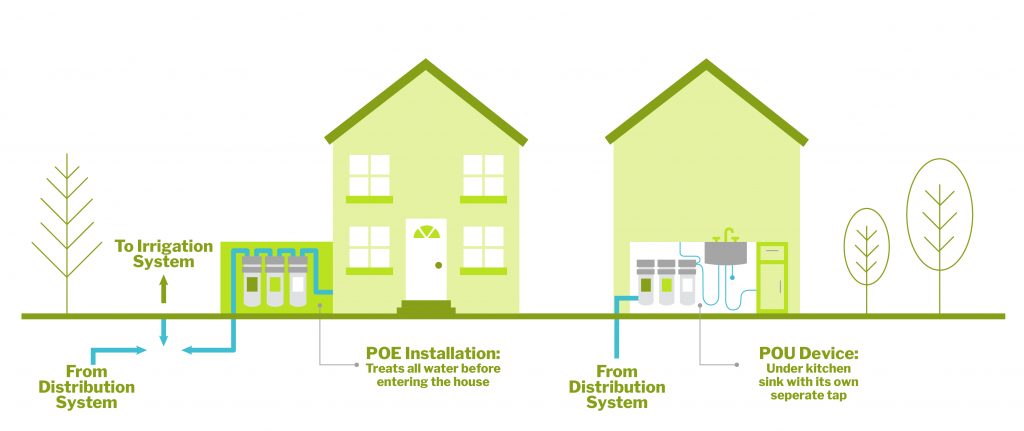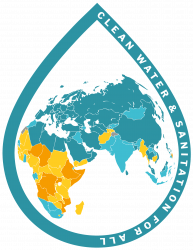Often referred to as decentralised wastewater treatment systems, these convey, treat and dispose or reuse wastewater from small communities, buildings and dwellings in remote areas. Wastewater flow is generated when appropriate water supply is available within the building or nearby. The system reuse or dispose of the effluent in relatively close proximity to its source of generation. They help to protect public health and the natural environment by reducing substantially the health and environmental hazards populations are susceptible to in other forms of sanitation solutions. Decentralised systems comply with municipal and state regulatory codes and work well in rural, suburban and urban environments [1].
*POE = Point of entry
*POU = Point of use


Pros
Decentralized wastewater treatment can
be a smart alternative for communities considering new systems or modifying, replacing, or expanding existing wastewater treatment systems. For many communities, decentralized treatment can be:
- Cost effective and economical
Avoiding capital cost, reducing operation and maintenance cost. Promoting business and job opportunities.
- Green and Sustainable
Using energy and land wisely, responding to growth whilst preserving green space. Benefitting water quality and availability. Decentralized solutions are considered “green” and “sustainable”. When properly designed, and maintained, they reduce the pollution load to natural water resources, and also encourage the reuse of the effluent for “green” solutions. The wastewater is treated, reused or disposed at close vicinity to its source, thus avoiding the need for transporting the wastes at long distance.
- Safe in protecting the environment, public health, and water quality
Protecting the community’s health, reducing pollutants and contaminants, in turn mitigating the health risks associated with wastewater.
Cons
- Maintenance
It is difficult to control the proper maintenance of large number of treatment units therefore the risk for public health problems increases
- Initial Cost
The expenses of building the treatment and storage or disposal units, together with an additional network for the gray water and the water to be reused, increases the cost of the building and in many cases, cannot be recovered by the cost of saved water
- Process is longwinded
The operation and maintenance process is an additional burden to the owner in terms of costs and time [2][3]

